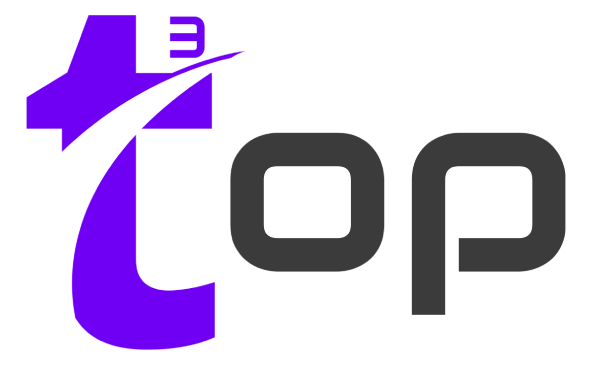In today’s fast-paced digital landscape, businesses face increasing pressure to innovate, streamline operations, and deliver exceptional customer experiences. Off-the-shelf software often falls short, unable to address the unique challenges and goals of individual organizations. This is where tailored software solutions come into play, offering customized tools designed to meet specific business needs.
By aligning technology with strategic objectives, tailored software can transform operations, boost efficiency, and provide a competitive edge. This article explores how custom software company Eureka Software, their key benefits, and practical steps to implement them effectively.
Why Businesses Need Custom Software
Every business operates differently, with distinct workflows, customer demands, and industry requirements. Generic software, while cost-effective initially, often requires workarounds or additional integrations to fit a company’s processes. These compromises can lead to inefficiencies, wasted time, and frustrated teams. Tailored software, on the other hand, is built from the ground up to align with a company’s unique needs.
For example, a retail business might need a custom inventory management system that integrates seamlessly with its e-commerce platform and point-of-sale terminals. A healthcare provider might require a patient management tool that complies with strict regulatory standards while streamlining appointment scheduling. By addressing these specific pain points, custom software eliminates bottlenecks and enhances productivity.
Moreover, tailored solutions provide scalability. As a business grows, its software needs evolve. Custom systems can be designed with flexibility in mind, allowing for updates and new features without disrupting existing operations. This adaptability ensures businesses remain agile in competitive markets.
Key Benefits of Tailored Software Solutions
1. Enhanced Efficiency and Productivity
Custom software is designed to fit a company’s workflows like a glove. By automating repetitive tasks, streamlining processes, and integrating with existing tools, it reduces manual work and minimizes errors. For instance, a logistics company could use a custom platform to optimize delivery routes, track shipments in real-time, and generate automated reports, saving hours of manual data entry.
2. Improved User Experience
Employees and customers alike benefit from software that’s intuitive and tailored to their needs. Custom solutions prioritize user-friendly interfaces, ensuring that staff can adopt the technology quickly and customers enjoy seamless interactions. A well-designed custom application can enhance customer satisfaction, leading to higher retention and loyalty.
3. Cost Savings in the Long Run
While custom software may require a higher upfront investment than off-the-shelf options, it often proves more cost-effective over time. Generic software can lead to ongoing expenses for licensing fees, add-ons, or third-party integrations. Custom solutions, by contrast, are built to minimize these costs by addressing only the features a business needs, reducing waste and redundancy.
4. Stronger Security and Compliance
Data security is a top concern for businesses across industries. Custom software can be designed with robust security measures tailored to a company’s specific risks and regulatory requirements. For example, a financial services provider might need encryption protocols and multi-factor authentication to protect sensitive client data. Custom solutions also make it easier to stay compliant with industry standards, reducing the risk of costly penalties.
5. Competitive Advantage
Tailored software enables businesses to differentiate themselves in crowded markets. By offering unique features or services powered by custom technology, companies can stand out from competitors relying on generic tools. For instance, a custom-built customer relationship management (CRM) system could provide personalized insights that help a sales team close deals faster.
When businesses face legal scrutiny, especially regarding technical disputes or intellectual property claims, working with a software expert witness can provide invaluable support. These professionals offer technical insights and impartial assessments that strengthen legal arguments in complex software-related cases.
Steps to Implement Tailored Software Solutions
Adopting a custom software solution requires careful planning and execution. Here are practical steps to ensure success:
1. Define Your Business Needs
Start by identifying the specific challenges or inefficiencies your business faces. Engage stakeholders from different departments to gather insights on pain points and desired outcomes. For example, a manufacturing company might pinpoint delays in production scheduling as a key issue. Clear objectives will guide the development process and ensure the final product aligns with your goals.
2. Partner with Experienced Developers
Choosing the right development team is critical. Look for professionals with expertise in your industry and a proven track record of delivering custom solutions. Ask for case studies or references to verify their ability to handle projects similar to yours. A collaborative partner will work closely with you to translate your vision into a functional product.
3. Prioritize Scalability and Integration
Ensure the software is designed to grow with your business. Discuss future needs with your development team, such as adding new features or integrating with emerging technologies. Additionally, confirm that the solution can connect seamlessly with your existing systems, such as accounting software, CRM platforms, or e-commerce tools.
4. Focus on User Training and Adoption
Even the best software is ineffective if users struggle to adopt it. Invest in comprehensive training programs to help employees understand the new system. Provide clear documentation and ongoing support to address any questions or challenges. A user-friendly design will also encourage adoption and minimize resistance to change.
5. Test and Iterate
Before fully deploying the software, conduct thorough testing to identify and resolve any issues. Pilot the solution with a small group of users to gather feedback and make necessary adjustments. Iterative development ensures the final product meets expectations and performs reliably in real-world scenarios.
Real-World Applications of Custom Software
Tailored software solutions are transforming businesses across industries. In retail, custom e-commerce platforms can offer personalized shopping experiences, such as product recommendations based on customer preferences. In healthcare, bespoke systems streamline patient data management while ensuring compliance with regulations like HIPAA. In logistics, custom tools optimize supply chain operations, from inventory tracking to delivery scheduling.
For small businesses, custom software can level the playing field by providing access to sophisticated technology typically reserved for larger enterprises. For example, a local restaurant might use a custom reservation system to manage bookings, track customer preferences, and send automated reminders, enhancing the dining experience while reducing administrative overhead.
Overcoming Common Concerns
Some businesses hesitate to invest in custom software due to concerns about cost, complexity, or development time. However, these challenges can be mitigated with proper planning. To manage costs, prioritize essential features in the initial build and phase in additional functionality over time. To address complexity, choose developers who emphasize clear communication and transparent processes. As for time, an experienced team can deliver a functional minimum viable product (MVP) quickly, allowing businesses to start reaping benefits sooner.
Optimizing Your Custom Software for SEO
To maximize the visibility of your custom software and the business it supports, incorporate SEO best practices into your digital strategy. If your software powers a customer-facing platform, such as an e-commerce site or booking system, optimize the website for search engines. Use relevant keywords naturally throughout your content, including in headings, meta descriptions, and alt text for images. For example, terms like “custom software solutions” or “tailored business technology” can attract organic traffic from businesses seeking similar services.
Additionally, create high-quality content to showcase your software’s benefits. Blog posts, case studies, and whitepapers can highlight how your solution addresses industry-specific challenges. Link to these resources internally to improve user experience and boost SEO. Regularly update your website with fresh content to maintain search engine rankings and attract referral traffic.
Conclusion
Tailored software solutions are a game-changer for businesses looking to optimize operations, enhance customer experiences, and stay ahead of the competition. By addressing unique needs, custom software delivers efficiency, scalability, and security that generic tools often lack. With careful planning, the right development partner, and a focus on user adoption, businesses can unlock the full potential of custom technology. Whether you’re a small startup or an established enterprise, investing in tailored software is a strategic move to drive long-term success in a digital-first world.













